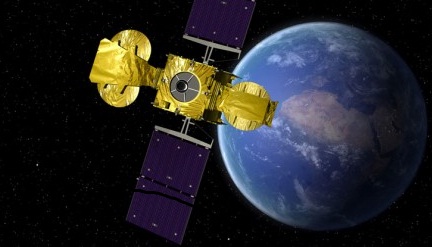BT To Use Satellite For Cornish Broadband

The Avanti satellite, launched last month, will help BT connect Cornwall and the Scillies
BT will use the HYLAS1 satellite, launched last month by Avanti, in its £132 million plan to get broadband to the remotest parts of Cornwall.
In a £1.2 million deal, BT will use satellite broadband services delivered by the newly-launched HYLAS 1 to plug the gaps in broadband, and help out the £132 million Next Generation Access project which aims to get 90 percent of homes in Cornwall and the Isles of Scilly on a decent broadband speed.
Satellite broadband is good enough
 The backbone of the Cornish scheme is fibre, which BT is planning to use to connect 10,000 homes in Cornwall and the remote Isles of Scilly, using fibre which can provide 100Mbps to premises and 40Mbps to homes, when delivered through roadside cabinets.
The backbone of the Cornish scheme is fibre, which BT is planning to use to connect 10,000 homes in Cornwall and the remote Isles of Scilly, using fibre which can provide 100Mbps to premises and 40Mbps to homes, when delivered through roadside cabinets.
Avanti’s services, provided from the HYLAS1 satellite which launched on 26 November, will fill in the gaps where fibre can’t be provided, giving up to 10Mbps broadband with 5Mbps uplinks. Avanti says its satellite broadband can be provided for £25 a month – or less if there are any subsidies.
BT is investing £78.5 million in the scheme, which will also get £53.5 million from the European Regional Development Fund.
“I am delighted that Avanti will be working alongside BT to ensure all residents of Cornwall will be able to connect to high speed broadband services.” said David Williams, chief executive of Avanti.
Satellite broadband, originally a decidedly second rate option, has improved thanks to the use of the Ka-band which allows two-way transmission, from a normal sized low-power antenna mounted on the outside of the house.
The only performance issue will be the latency, as the 36,000 mile journey to the satellite adds about 400ms to the time taken for data to reach its destination.
“Latency is a fact of life derived from the laws of physics, and every form of technology has a latency factor,” said Williams. While wargamers might reject a service with a ping of 400ms to 600ms, he claims that the service is already used for the real thing: “The military is using a Ka-band satellite to pilot and control aerial vehicles,” he said.
The project is partly funded by European Regional Development Fund Convergence ( £53.5m) while British Telecom (BT) will invest £78.5m on the scheme.